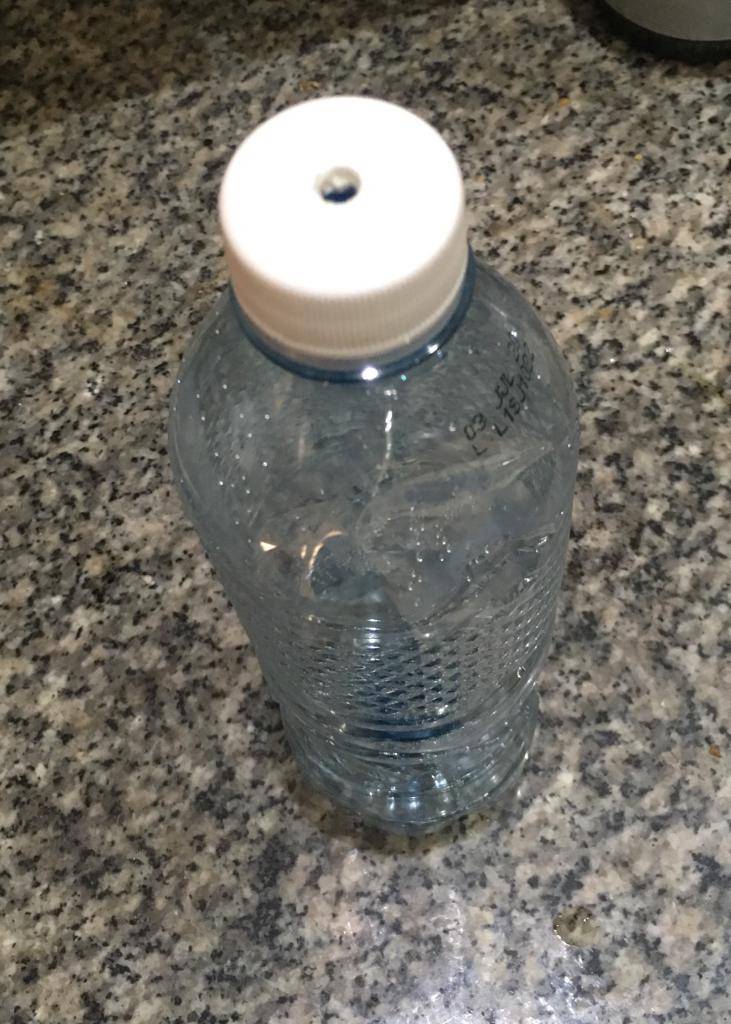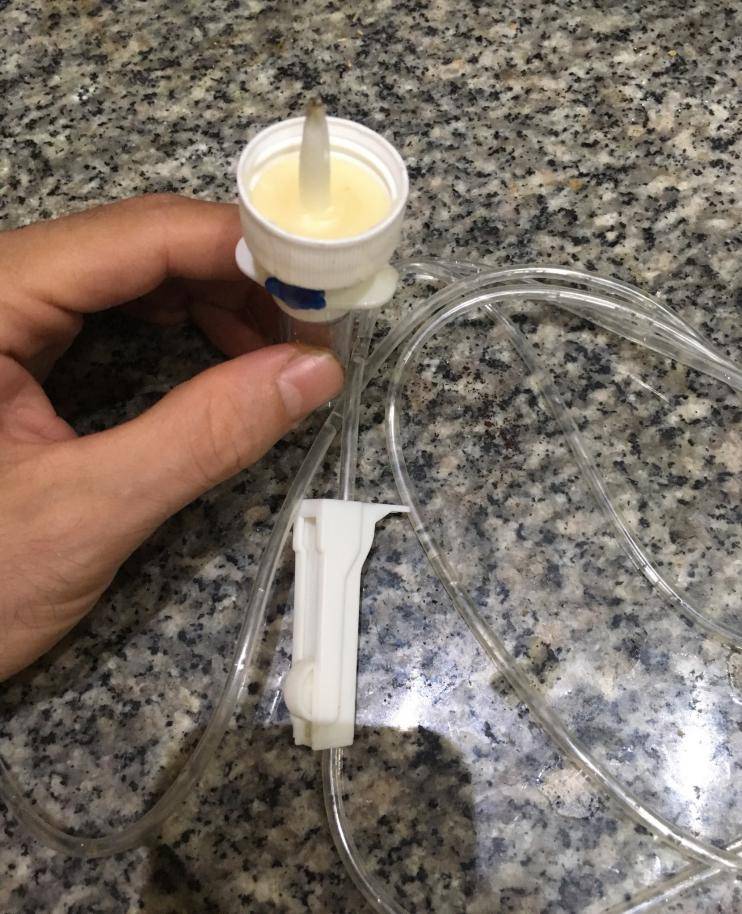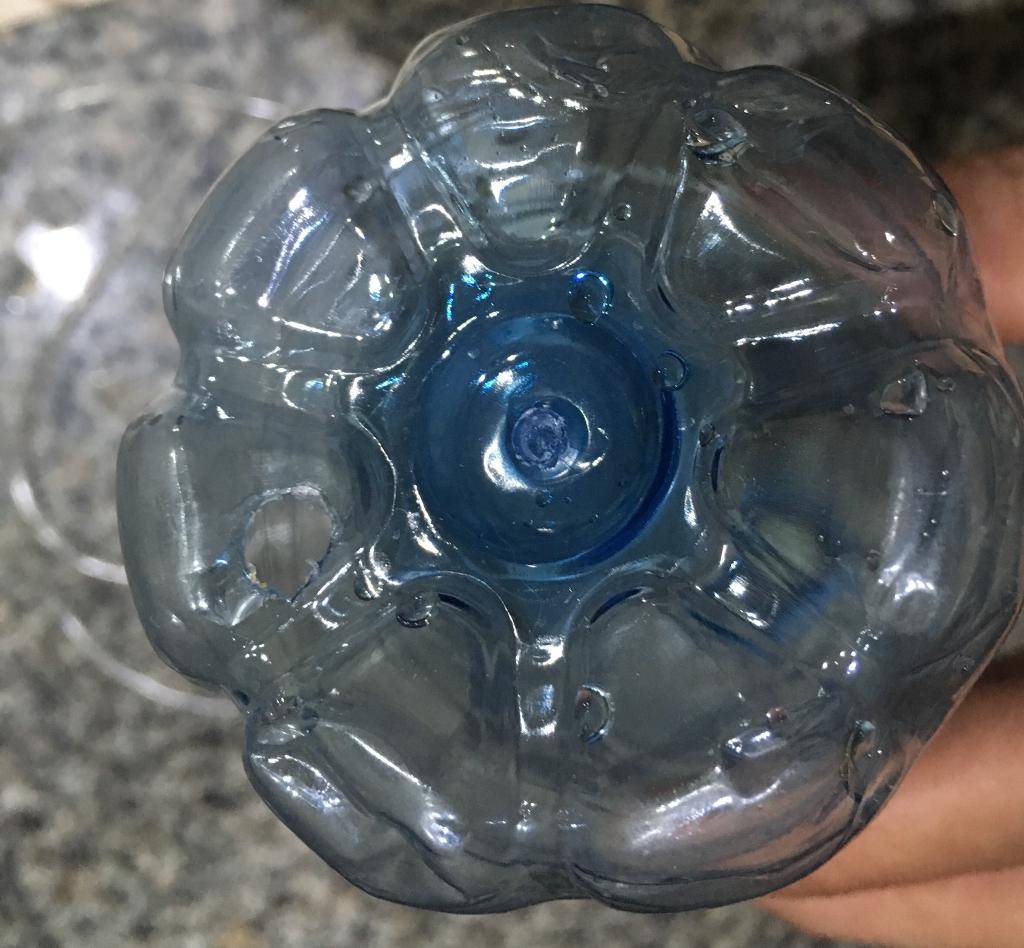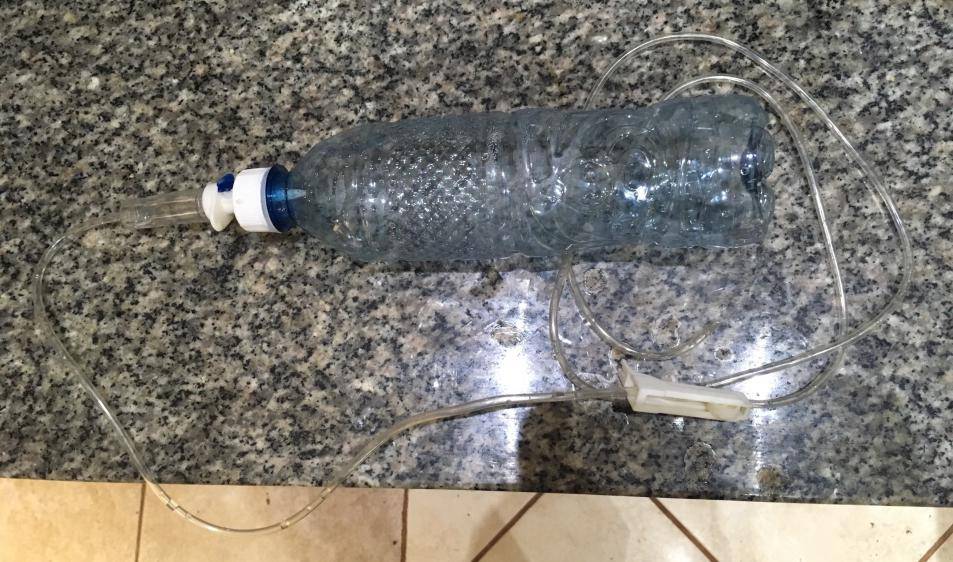Hookahhead
Active member
Now that I had my "selective enrichment" figured out, I needed to collect my sample. Again if we refer back to the Enrichment / Isolation page, we see that we can also be more selective in how we collect our sample. If we look back at our pictures of the idealized Winogradsky column, were looking for the organisms living just above the mud, in anaerobic conditions.
While I was in University, I took a class on Limnology, which looks at the Ecology (Biological, chemical, geological and physical attributes of inland waters). In this class, we used a variety of devices to collect plankton samples from different areas (horizontal and vertical). Thinking back on that, and utilizing an idea I already had, I was able to craft a nice piece of sampling equipment!
Simple enough... Plastic bottle with a hole cut in the cap. This one happens to be 600 mL but any size should work.

I have access to the tubes that run between an IV drip bag (saline) and the IV port. These are a waste from a veterinary practice, they are a "disposable" item and used new every time. The part that connects to the IV port is cut and disposed of before I receive them. It's just a piece of plastic tubing with a "pinch valve" on it. This allows you to control the flow of fluids moving through it. The end that is still attached is the part that would be inserted into the IV bag, and is therefore not contaminated with any blood/diseases. This part is inserted through the cap. I heated wax from a tea light, and poured it around the inside of the cap to make a better seal. I accidentally burned the tip with the candle haha! After the wax had set up, but was still soft, I twisted the bottle on and allowed it to cool.

The last step was to cut a small hole in the bottom, this will be how air/water get into the bottle without creating a vacuum.

I had the idea to use this exact same setup as a sort of "drip system" for times when I'm away. Here we will use it in reverse, and allow it to gently fill with water. This is done to prevent kicking up sediment and the mixing of layers, as well as keeping the sample from mixing with the air as much as possible.

While I was in University, I took a class on Limnology, which looks at the Ecology (Biological, chemical, geological and physical attributes of inland waters). In this class, we used a variety of devices to collect plankton samples from different areas (horizontal and vertical). Thinking back on that, and utilizing an idea I already had, I was able to craft a nice piece of sampling equipment!
Simple enough... Plastic bottle with a hole cut in the cap. This one happens to be 600 mL but any size should work.
I have access to the tubes that run between an IV drip bag (saline) and the IV port. These are a waste from a veterinary practice, they are a "disposable" item and used new every time. The part that connects to the IV port is cut and disposed of before I receive them. It's just a piece of plastic tubing with a "pinch valve" on it. This allows you to control the flow of fluids moving through it. The end that is still attached is the part that would be inserted into the IV bag, and is therefore not contaminated with any blood/diseases. This part is inserted through the cap. I heated wax from a tea light, and poured it around the inside of the cap to make a better seal. I accidentally burned the tip with the candle haha! After the wax had set up, but was still soft, I twisted the bottle on and allowed it to cool.
The last step was to cut a small hole in the bottom, this will be how air/water get into the bottle without creating a vacuum.
I had the idea to use this exact same setup as a sort of "drip system" for times when I'm away. Here we will use it in reverse, and allow it to gently fill with water. This is done to prevent kicking up sediment and the mixing of layers, as well as keeping the sample from mixing with the air as much as possible.
Last edited:



